
Day 1
Phew! After 24 hours of travelling, including a 6 hour layover in Cologne and an 11 hour flight, we finally touched down in Bangkok Suvarnabhumi Airport. Thailand are 6 hours ahead of GMT, so even though our watches were set to the local time of 9am, this felt more like 3am to us!
We made our way through the pristine airport, abuzz with staff and attendants sweeping the floors, wiping works of art, and planting impressive orchid floral displays, and quickly realised that there was something special in the atmosphere here in Bangkok.
We grabbed our main luggage and quickly made our way down to the Airport Rail Link and set off into the very impressive Bangkok public transport system.
There was a slightly eerie, sombre and repetitive jingle playing over the train’s speaker system, along with screens showing black and white images interspersed with people dressed in black being interviewed that looped with the music. As we looked around the cool, spacious carriage we notice that the majority of locals were also dressed in black and white. Then, as we skimmed the skyline of Bangkok on the Skytrain we saw the first billboard dedicated to the passing of King Bhumibol Adulyadej Rama IX of Thailand; the jingles, displays and dress were all because the date of his cremation, one year after his death, was fast approaching.
After four trains, plenty of sweat and many friendly, helpful guards helping us on our way, we finally jumped off our BRT bus at Wat Pariwat, where we very quickly became confused about which way to go to reach our homestay. Fortunately, (and unknown to our host as we discovered later on), the security guard for this BRT stop had hand drawn a map with directions to the Fahsai Homestay.

This was our first introduction to a local neighborhood in SE Asia. On first appearance, with its crumbling buildings, mazes of head-height electrical wires, staring locals, dogs barking aggressively and rubbish everywhere, a uninitiated western visitor could be forgiven for thinking this was a run-down and intimidating place to be. But we soon learned that this was not the case at all!
Trundling our backpacks and wheelie suitcase through the hot, potholed streets we eventually found our turning, which followed a path alongside a very stagnant stream (with the help by way of some useful pointing from a friendly local) – here, finally, was our Fahasai Homestay.

Sliding open the front gate, we finally entered our little slice of paradise after 24 hours of travelling.
Nittaya, our host, came and greeted us “Sawasdee!”. She showed us to our room, which was a gorgeous traditional style wooden Thai bungalow, complete with our own ensuite, shower, TV and air conditioning, the latter of which we put on immediately as it was beyond hot in this little wooden sauna!

The lovely Nittaya and her family offered us some delicious lunch, as our airplane food had finally worn off. It was a sort of glutenous soup with chicken and vegetables, followed by a rather potent sweet ginger and miscellaneous root vegetable dessert – “food is medicine”, as Nittaya said, and this food would be good to settle our stomachs after so long traveling.

24 hours with barely a wink of sleep finally took its toll and we slept for 3 hours as thunderstorms rolled overhead, before awaking momentarily not knowing what day or time it was.
We made ourselves get up and get acquainted with the local area, resolving not to sleep again until that night.
Wandering out into the stunning garden, surrounded by fruit trees of varying types (jackfruit, papaya, noni fruit), Nittaya recommended that we take a look at a local night market, which fortuitously took place on Wednesdays.
Back in the alley that linked our homestay to a more main road, what had been a quiet, still, stagnant stream was now alive with bats swooping low to catch the insects that swarmed from the waters. And so we strolled out into the fading evening, with the remnant puddles and pools of water from the storms under our feet, and after a little searching based on Nittaya’s instructions, we finally found the market.

Located in an alley nestled within Wat Dok Mai (literally called Wat Dok Mai on Google Maps), this long sprawling market had it all! Steaming piles of fresh hot food, vats of various stocks and stews bubbling away, fruits of all colours shapes and sizes. It was great to experience a place that was frequented by locals (the first of many truly authentic experiences which have come to be the holy grail which we seek in every new place we travel to).
We finished the night off with a trip to a local restaurant which came highly recommended for its seafood. As we sat on the shores of the Chao Phraya, feasting on squid, prawns and other vibrant and colourful dishes, we toasted to the end of our first day, and to the very beginning of our travels!

Day 2
Fresh faced and somewhat refreshed, we headed out to the tropical garden, where we joined other travellers for breakfast (it was a soup similar to that we had the day before, with a side of rice and prawns this time and a few cowslip creeper flowers in the broth).
Shortly after breakfast, Pop (Nittaya’s husband) passionately introduced us to his home brewed coffee, and told us its story, from bean to cup. His coffee plants grow on his own plantation in the south of Thailand. Pop explained that coffee isn’t commonly grown in Thailand, as many farmers believe that the final payout is not worth the effort. Pop has done the maths however, and realised that coffee really does sell quite well when it finally reaches the cup.

Pop ran us through a demonstration of how to roast the coffee beans by hand. With only a little stove and a small brass wok, Pop meticulously stirred and blew on the beans as they curled and squeaked in the heat, sending paper thin husks of the beans’ skin soaring high on the acrid smoke. We all had a turn of course, before grinding the roasted beans in a special grinder, then percolating them.
The taste was quite unlike the slow roasted varieties we are used to back home, much stronger and bitter to taste – fortunately Pop had some honey made by bees from his own coffee plantation – knowing the bees pollinated the coffee that we were drinking was just extra special! A highlight was tasting the naturally caffeine-free coffee flower tea, and learning how this had to be carefully picked as not to disturb the normal coffee harvest – it tasted delicious too.

Afterwards, Pop opened the doors to his family home, much of which he keeps as a museum. He informed us that over 100 years ago his Brahman family served at the palace, eventually becoming musicians in the later years. Pop proudly showed us his family’s treasures, asking us to guess what items were used for and letting us handle many trinkets.
Amongst the myriad of gifts and memorabilia from his family were silverware, intricate furniture, wardrobes and chests, a working gramophone and telephone, and weapons such as an WW2 English navy knife (this interested Ruth particularly, as her Grandfather served in the navy).

Donning our hats and suncream (it was a scorching hot 32 degrees day), we made our way into the centre via the trusty BTS bus to Silom. Here we walked through the bustling commercial district to Lumpini Park, where the midday sun blasted back into our faces thanks to the wide, sprawling plazas. We found a spot of shade, where we could see little igrits hunting tiny little fish, and even the park’s infamous resident monitor lizard.

We then began a sweltering and long walk past china town, towards the Golden Buddha, stopping only for an overpriced phat thai in an air-conditioned restaurant (worth it). The Golden Buddha, sitting peacefully atop Wat Traimit, is actually made from 5.5 tonnes of solid gold and is the world’s largest golden statue.
This solid gold Buddha – or the Phra Phuttha Maha Suwana Patimakon, to give it it’s full name – was a hidden treasure for may years. In the 1800s it was swaddled in plaster to hide its true wealth. It was only when it came time to move the Buddha in 1955 that the true value of the Golden Buddha was revealed within its casing.

It was back on the street, outside Wat Traimit, that we learned our first lesson in ‘scams’ and looking after ourselves. As we looked at our map (tourists alert!) a man who seemed to be in charge of the Tuk Tuks approached us asking if we wanted a tuk tuk ride to the river (which by coincidence was our plan).
We had a vague idea that we needed to get to a specific port to head up the river to Wat Pho. From our map, we could see that we could pick up a river taxi from nearby N4 stop. This man explained that the river taxis wouldn’t pick up in that direction of travel and that we needed to go to N1. He offered us a tuk tuk for 20baht. Having not yet ridden by tuk tuk we couldn’t really gauge if this was a cheap scam (we’d read about infamous 10baht tuk tuks in our lonely planet… but Alex had miss-remembered this as 2baht) or genuine, but we decided to give it a go.
We didn’t get dropped off at the N1 river taxi stop at all. Where we actually were, it transpired, was a private boat ride company. We were offered a seat and the lady quoted us 1300 baht for our own boat. We had to laugh at this, whilst this was only £30, this was way over our daily budget. She wasn’t helpful in explaining where we needed to go to get to N1 (we were close) but she didn’t push us into a sale.
We walked away, our tuk tuk driver was keen to take us where we needed to go (we assume because his friend that offered us the ride wouldn’t be getting his commission). It took about 20 minutes to walk to the right place. The official, government taxi boat ended up being 30 baht for us both (35p each) and we got a longer ride as we were further south, so no harm done and we could tick ‘tuk tuk ride’ off our list!

After this we decided no more tuk tuks. It seems like the going price for a legitimate one that won’t take you to a friend’s shop or service is between 70-200 baht, depending on who you ask and how much they are willing to bargain. One driver told us he wouldn’t go to less that 70 baht, as under this price he wouldn’t take us straight to our destination.
Having no real idea how much was too much (and no real way of double checking the price indicated in our Lonely Planet) we decided to go back to using the very reliable public transport system for the rest of our trip (this did involve some long walks as some parts of the city aren’t connected to the public transport system yet.) Oh yes, and Ruth is calling total BS on what the guy leading this scam said about the N4 taxi boat only going south, we stopped at N4 going north on the way to Wat Pho.
It’s when people say stuff like that, which makes no sense when you think about it logically, that you sense is crap but as you are unsure you go along with it, it’s only in hindsight you realise what total crap they have told you, but at the time it didn’t sound right either.
Wat Pho, or the reclining Buddha, is very impressive! I had visited when I was in Bangkok 10 years ago. As we entered the main temple Alex was wondering where it was and I casually pointed to the huge head (it’s so big you can only see parts of it at a time), his reaction was brilliant. We wandered around the surrounding gardens, peaceful in the late afternoon sunlight, the scent of frangipanis carried on the river’s breeze. The grounds were expansive and we even stumbled upon some monks at prayer, unperturbed by our presence.


From Wat Pho we headed towards the palace. Because of the impending cremation plans for the late king, the palace was closed, as we meandered past women in formal black attire and men in official military uniforms, we saw many black and white drapes being erected.
We eventually made it to Khao San Road, and there ventured for dinner – not a peaceful experience. Here we found nothing but peddlers pushing their wares of scorpions on a stick, cigarettes and annoying toys. What was once a place enjoyed by locals as well as travelers has become a sticky tourist trap, and in my eyes is not the real Bangkok. This is the only part of Bangkok that many backpackers see. We went as Alex hadn’t been before and I am in no rush to go ever again.
The next morning I woke early to offer food to the monks as the pass by the house barefoot to the local temple. Pop is devoutly religious and we couldn’t offer food the day before as it was Buddhist day and pop spent the day in his meditation room praying and offering gifts for his late mother and other spirits. We gave rice and refreshments which they collected in a basket, following pop’s lead we then knelt on the floor to be blessed. It was a touching experience and one I’m pleased I woke up early for.
Pop explained that Monks do not buy food, but rely on donations. It is also a great honour to have a man enter into the priesthood and many do so for a few years or so. Before Alex awoke I had the chance to practice some yoga on the veranda outside our bungalow. Despite being breakfast for a large family of mosquitoes, it was worth it.
Once Alex was up and about we asked our host about somewhere good locally to swim, she gave us an address and we braved the local motorbikes for the 2km ride to the swimming pool. I sat side saddle as that is what I’d seen the local women do. I would not recommend this! The Olympic pool was quiet and totally off the tourist track, they were still setting up so we sat sipping a cold can of drink in the shade away from the midday sun. The pool was blissfully cool and deserted, save a few local boys playing in the shallows.
After our swim the coolness didn’t last long. Back in the heat of the city we got a taxi back to our homestay and stopped by the local temple Wat Pariwat to feed the fish by the river. Later we visited the local restaurant again and toasted our last night.
We departed early on 21st October and made our way back via the trusty public transport system, more people dressed in black and white now in the last few days before the King’s memorial day. Bangkok it’s been fleeting but we are ready for Vietnam….

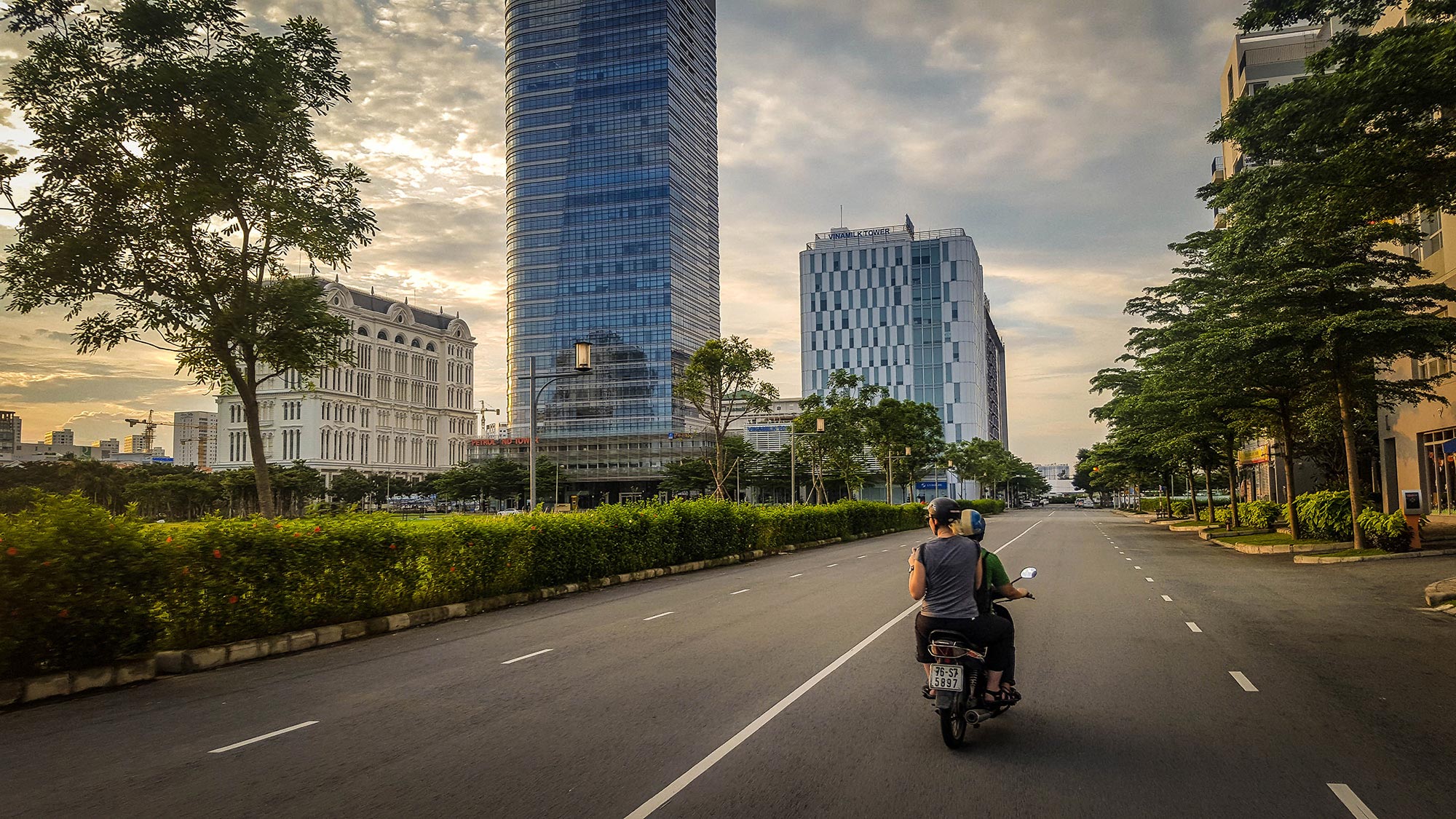
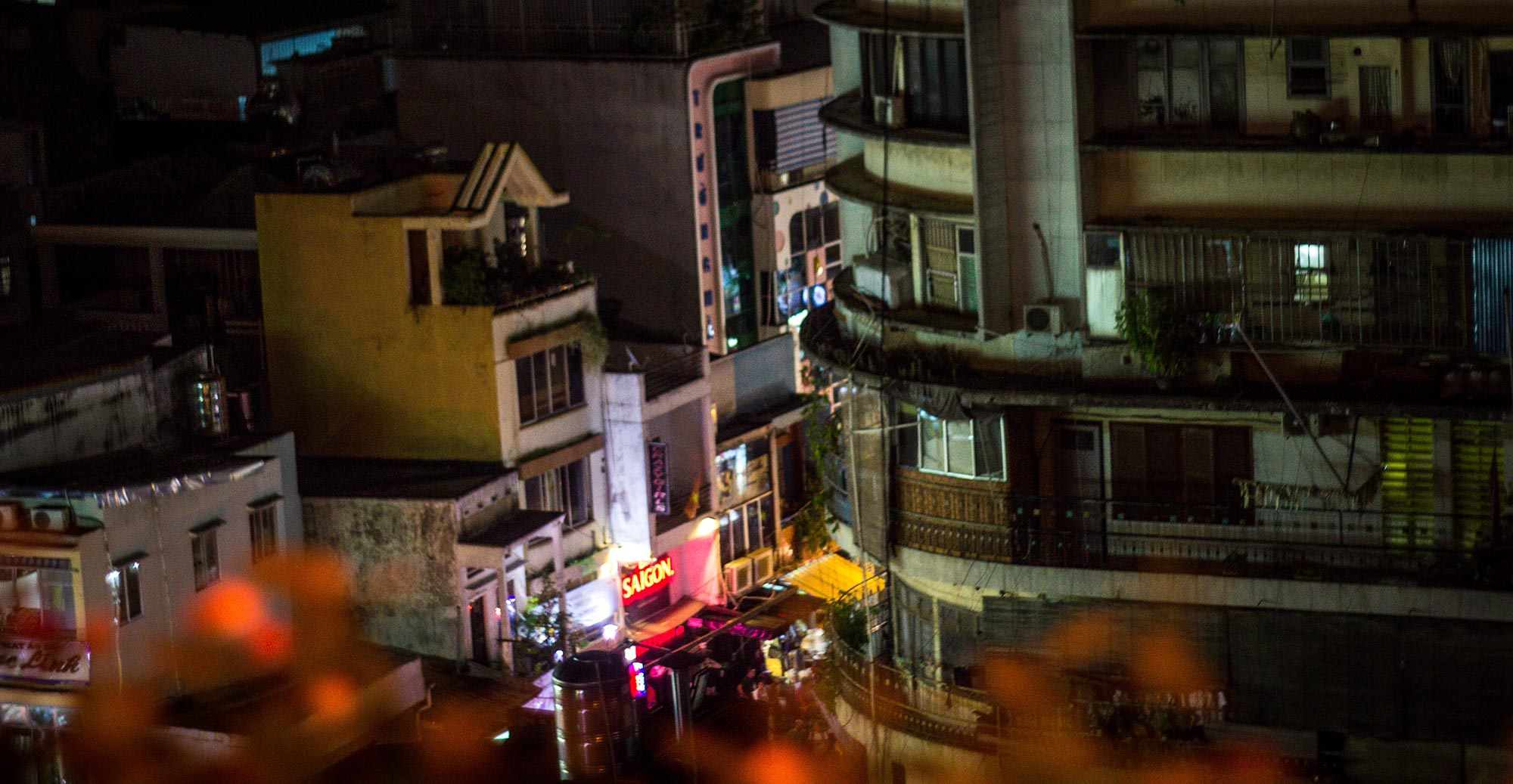
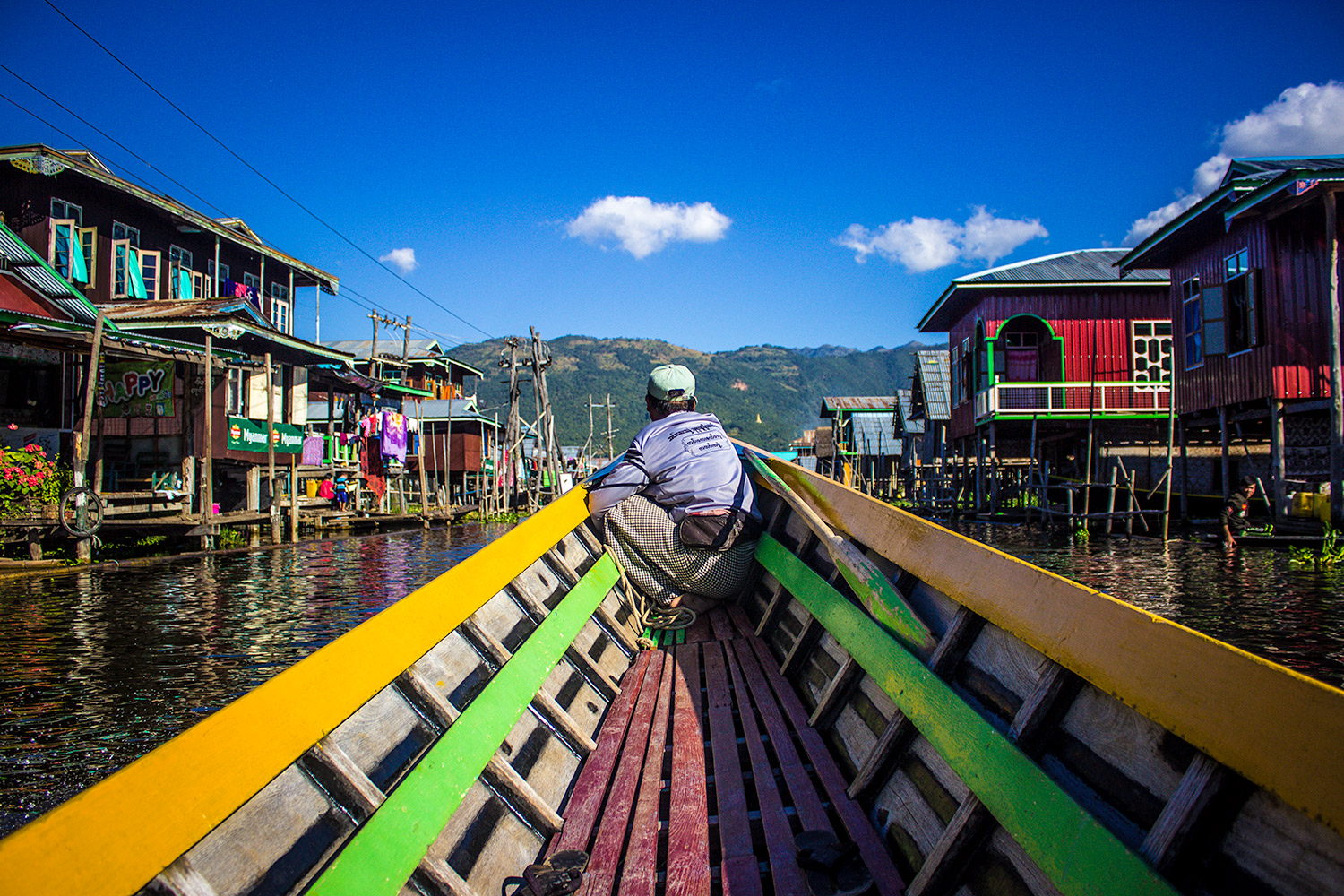

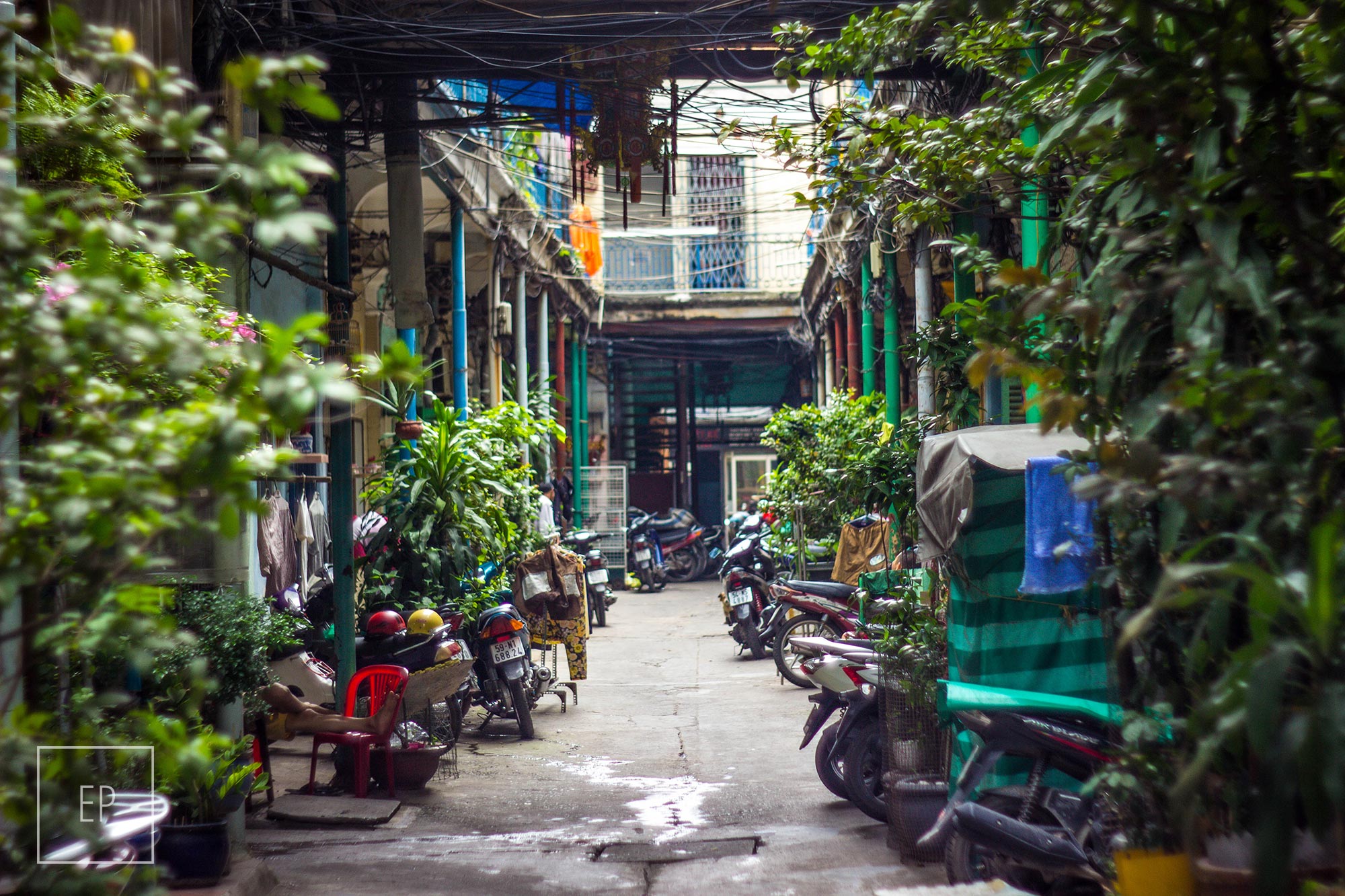
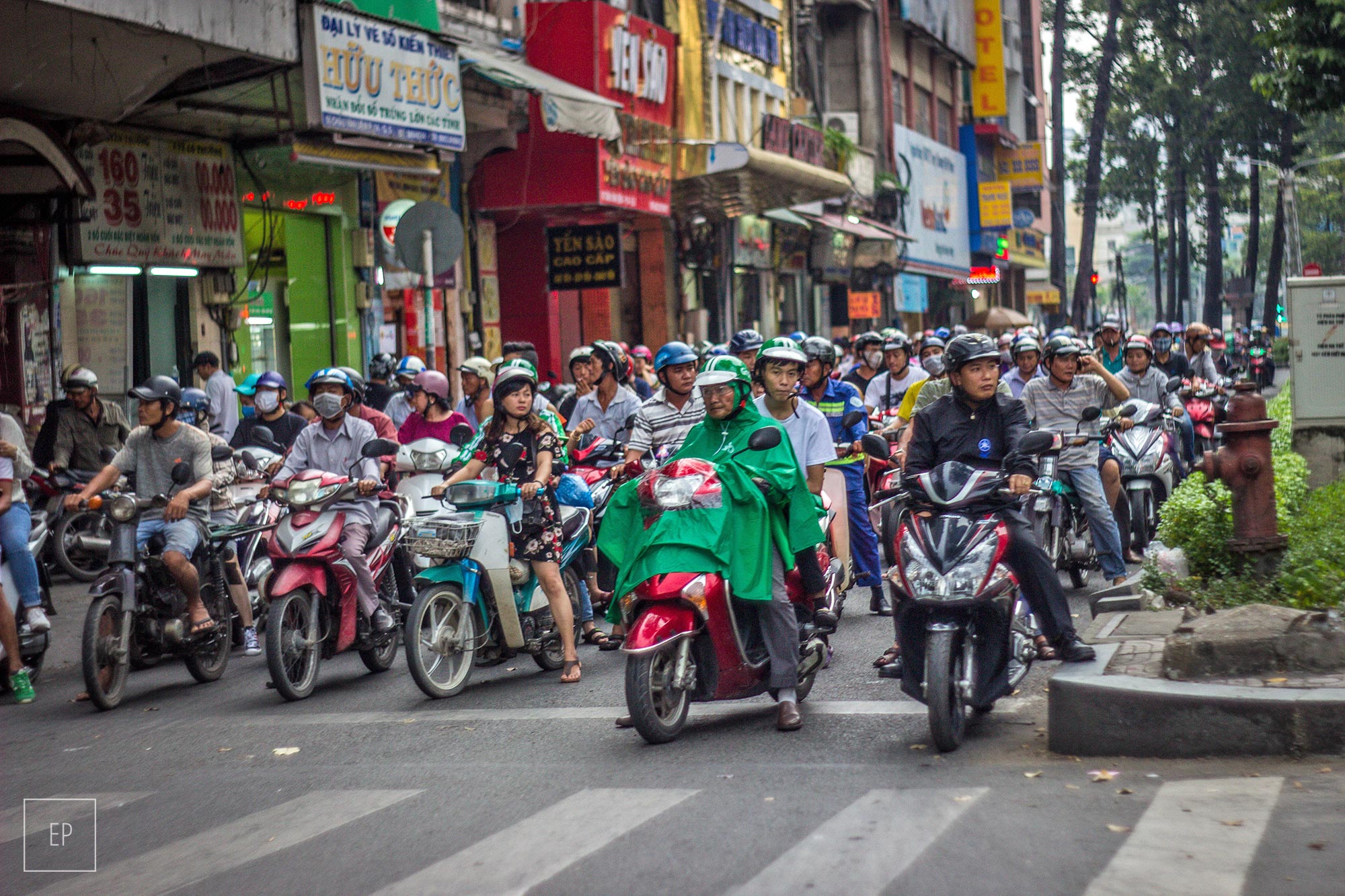

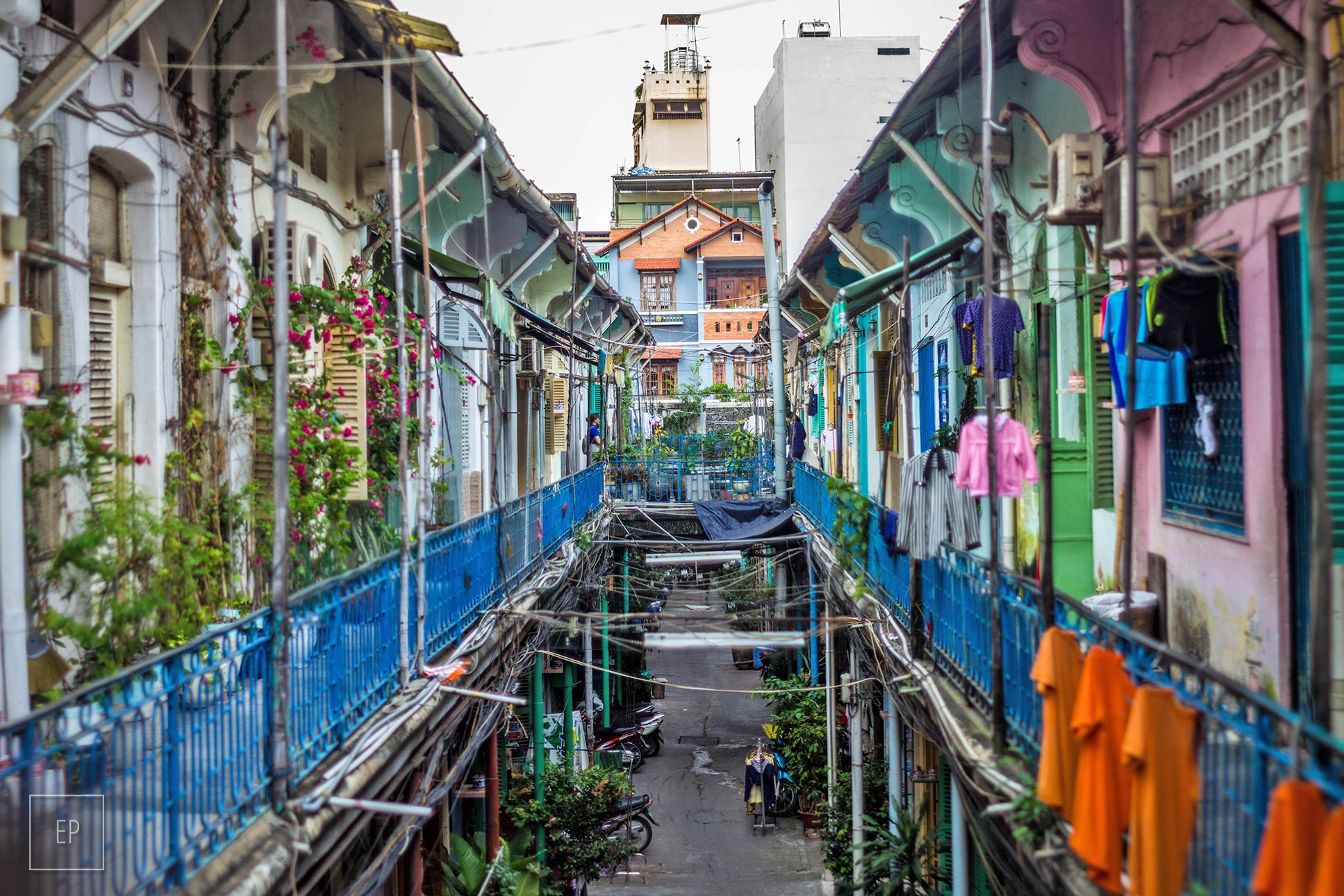


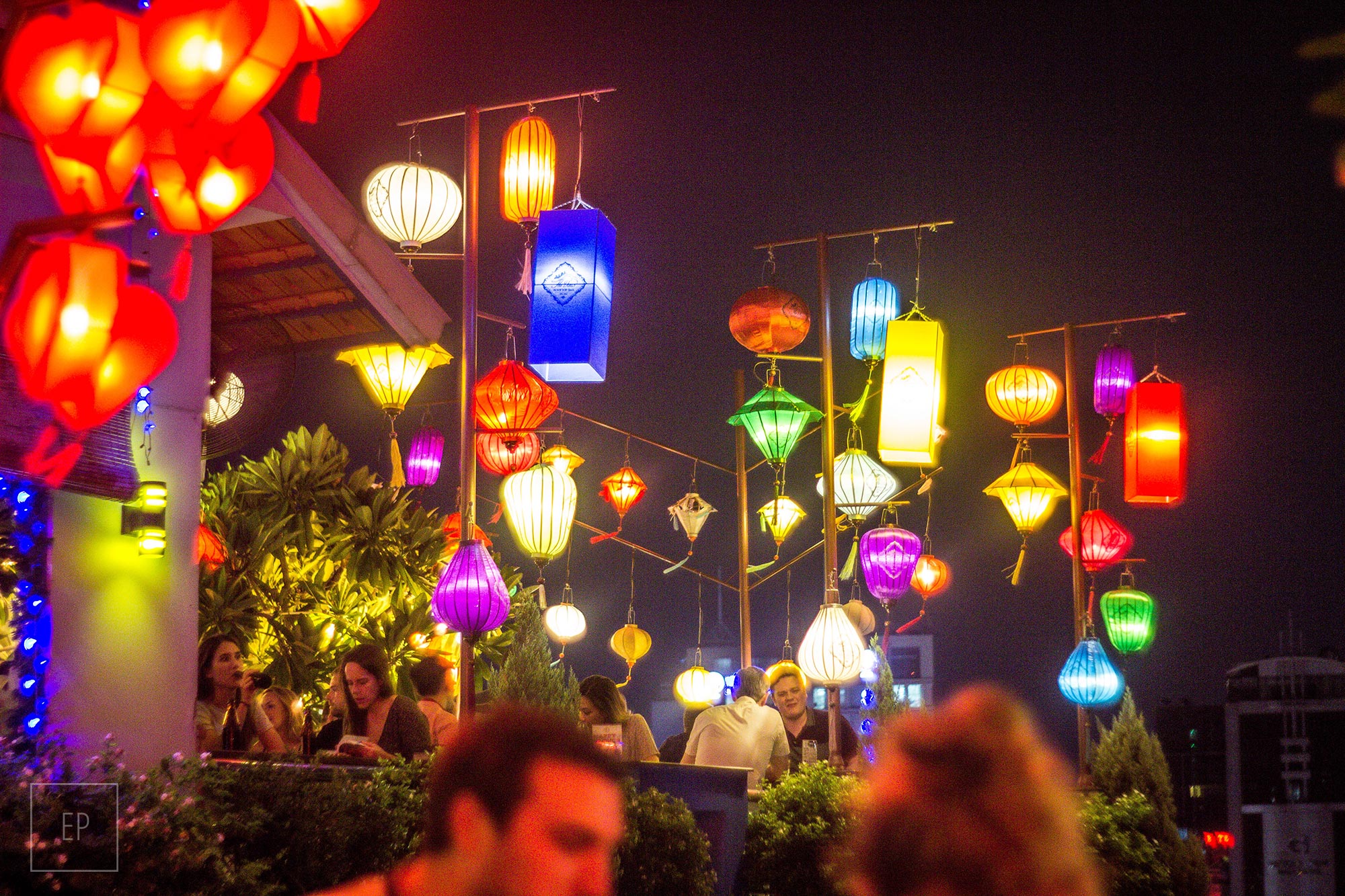
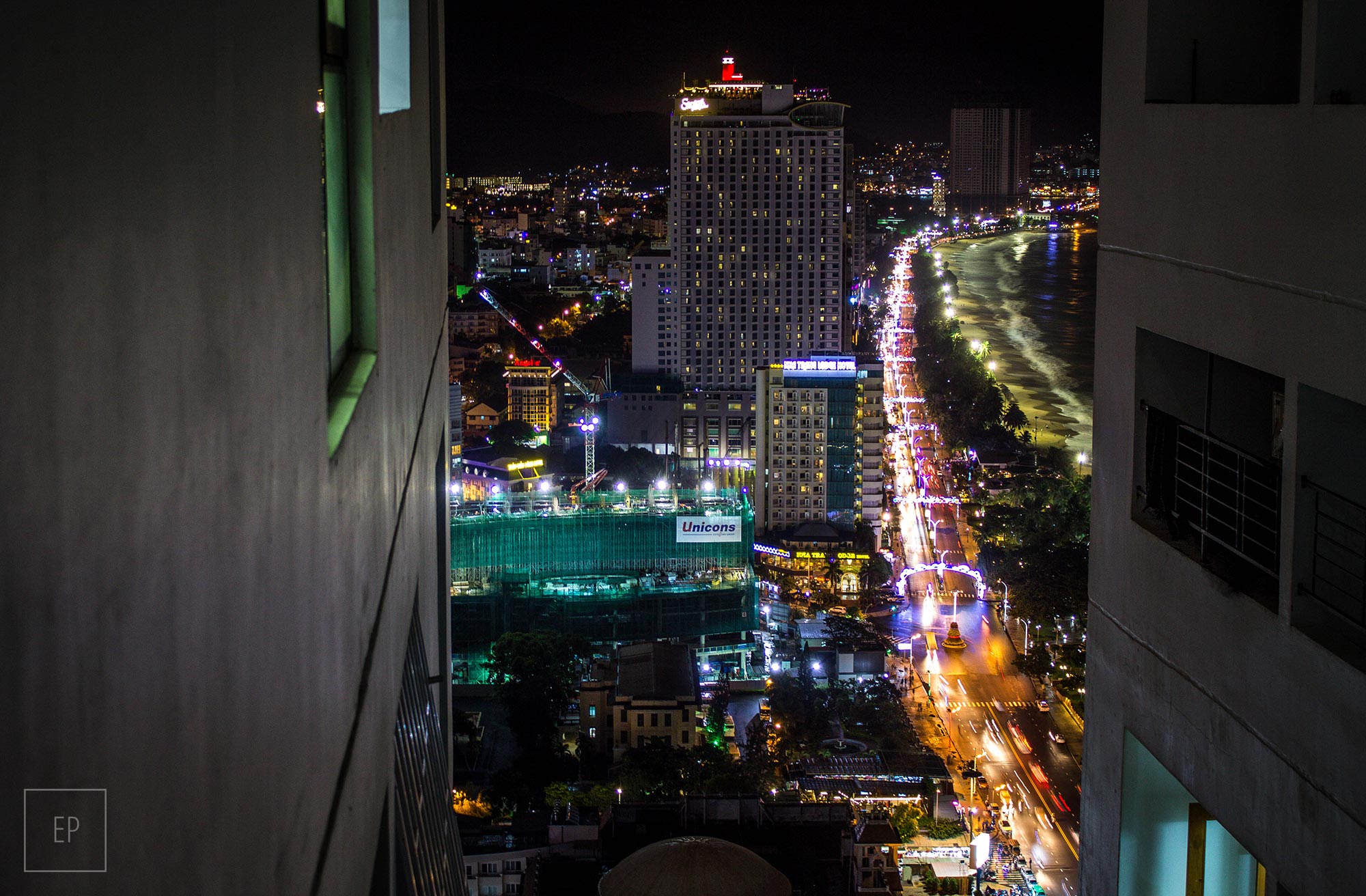
Hi, this is a comment.
To get started with moderating, editing, and deleting comments, please visit the Comments screen in the dashboard.
Commenter avatars come from Gravatar.
Great read Ruth. Look forward to the next post x
Love it! Great way for us back home to stay up to date with parts of your journey…. more please! xx